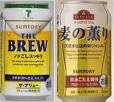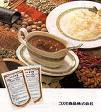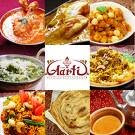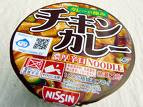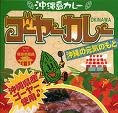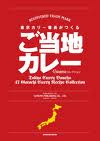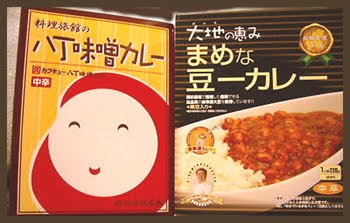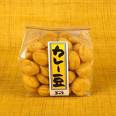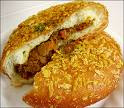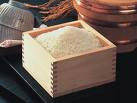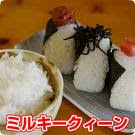::::::::::::::::::::::::::::::::::::::::::::::::::::::::::::::::::::::::::::::::::::::::::::::::::::
Michelin about Japan
Michelin has been active to rate restaurants in Tokyo.

The tour guide Michelin awarded 191 stars to 150 restaurants in the Japanese capital, Tokyo, the most number of stars awarded in any city.
Paris so far had the most stars, 65.
Michelin and Tokyo Food
List of some Tokyo Restaurants
:::::::::::::::::::::::::::::::::::::::::::::::::::::::::::::::::::::::::::::::::::::::::::::::::::
quote December 2007
Michelin Tokyo takes Japan by storm
Guide sells out nationwide, but critics question rating system's validity
By REIJI YOSHIDA
Japan Times
A new book released last month has created a sensation and is selling like hotcakes in Japan, with bookstores being picked clean of the initial stock of 120,000 copies in only three days.
Michelin guides Director Jean-Luc Naret speaks about the famous restaurant guide during a recent interview in Tokyo's Iidabashi district. YOSHIAKI MIURA PHOTO
Its publisher printed an additional 150,000 copies and put them on shelves on Dec. 12, but they also quickly disappeared from bookstores up and down the country.
The book in question is the Japanese version of Michelin Tokyo 2008, the first Asian edition of the prestigious gastronomic guidebook.
Kazumi Kawashima, an employee at Yaesu Book Center near Tokyo Station, said the only book she can remember selling like this was the "Harry Potter" series.
"We started selling the book at 8 a.m. (on Nov. 22) outside the store — two hours before the store itself opened. We ran out of our stock before noon the same day," Kawashima said.
..... But what has surprised people the most is perhaps not the book's impressive sales, but the fact that all of the 150 restaurants listed in Michelin Tokyo carry at least one prestigious star.
..... That means Tokyo is now considered the world leader in terms of the sheer number of Michelin stars awarded.
..... Before launching the Tokyo project, Naret visited other Asian cities, including Hong Kong and Singapore. He said he was particularly impressed with Japanese people's passion for food and the quality of restaurants in Japan.
At a reception party to celebrate the publication of the book last month, he kiddingly urged reporters to buy a copy immediately because, he joked, all the copies would soon be gone from bookstores.
source: Japan Times . Dec. 29, 2007
:::::::::::::::::::::::::::::::::::::::::::::::::::::::::::::::::::::::::::::::::::::::::::::::::::::
Critics dispute Michelin regard for Tokyo food
By ERIC TALMADGE,
Associated Press Writer
Mon Aug 25, 2008
TOKYO - Paris might still be good if you've got a big wad of cash and want the best of the best. But Tokyo is really where it's at food-wise, at least according to the French people who keep track of these things.
When the venerable Michelin guide came out with its first Tokyo edition, it was so full of praise that it almost read like a press release for the Japan Restaurant Association. Its conclusion — Tokyo is the culinary capital of the world.
But is it, really?
Here's a Michelin morsel:
"Tokyo is a shining star in the world of cuisine," Michelin Guides Director Jean-Luc Naret said shortly after its Tokyo edition came out last November. "We found the city's restaurants to be excellent, featuring the best ingredients, culinary talents and a tradition passed on from generation to generation and refined by today's chefs."
Michelin's Tokyo guide awarded a whopping 191 stars to 150 restaurants in the Japanese capital, the most number of stars awarded in any city. Previously, Paris had the most stars, at 65. Eight restaurants in Tokyo — three French, two sushi bars and three traditional Japanese — received Michelin's highest three-star rating.
Paris can still claim to have the most top-rated restaurants — with 10. New York has just three.
The announcement was a godsend for Japan, which has been trying for years to put a shine on a tourist industry muted by the country's notoriously high prices and a powerful lineup of rival attractions just beyond its shores — such as the fabled shopping districts of Hong Kong, the beaches of Thailand, and the rapid rise of Shanghai as one of Asia's most interesting cityscapes.
Treated as front-page news and trumpeted on TV broadcasts, Michelin's glowing review was also seen as confirmation of the value of something that the Japanese have long seen as a source of national pride — their mastery of sushi, raw fish and all the other famously subtle elements of Japan's indigenous cuisine.
The guide sold 120,000 copies in just three days.
It was a hard-won honor for Tokyo.
A team of three undercover European and two Japanese inspectors spent a year and a half visiting 1,500 of Tokyo's estimated 160,000 restaurants to decide on the ratings, according to Michelin. The guidebook series rates restaurants on excellence in cooking, service, decor and upkeep.
But the Michelin hype has met with a great deal of skepticism — especially from other reviewers.
One particularly controversial pick was a sushi bar that — though on just about everybody's list for quality — is located in a basement, is cramped even by Tokyo standards and shares its restroom with other tenants. Ambiance, it would seem, is pretty subjective.
Some of Michelin's competitors say there are bigger problems with Michelin's whole premise. Why, for example, are so many French restaurants at the top of the Tokyo list? Why no Chinese, no Italian, no palaces of tofu?
"There are a lot of great cities in the world," Tim Zagat, founder of the Zagat guides, told The Associated Press. "Tokyo is an exciting place to eat. But Paris is an exciting place to eat. So is Rome."
The question, he says, is whether Tokyo is better.
"I don't think it is helpful to make that kind of statement," Zagat said. "Tokyo has the best Japanese food in the world. But it is nowhere near as diverse as other cities."
There is no doubt Tokyo — the land of the Iron Chef — has an exceptionally well-developed restaurant scene.
Zagat said the reasons are many — not least of which being the fact that the Japanese like good food, they have money to spend on it and their native cuisine is highly refined and places a very strong emphasis on tradition, freshness and the natural balance of ingredients.
Another reason, however, is that dining in is often not an option, especially for business-related meals. Homes continue to be relatively small and cramped, and getting there often involves a long commute for all. Thus, restaurants have thrived, from the neighborhood bar to the whole areas of town that are built around after-hours entertaining.
Yasuo Terui, the editor of "Tokyo Ii Mise, Umai Mise (Tokyo Good Restaurant, Delicious Restaurant)" whose first edition went on sale in 1967, was also critical of Michelin, saying that it only scratched the surface of what there is to be had in Tokyo.
"I don't think Michelin knows anything about Japan," he said.
But he basically agreed with the rating of Tokyo as the world's best place to eat.
"I think we can call it the culinary capital of the world," he said. "If you try any cuisine, it's hard to go wrong in Tokyo."
Terui said part of the secret of Tokyo's success is that many of emerging Japanese chefs have studied Italian, French, Chinese and other international cuisines all over the world, and are trying to be creative by adding to them a fusion of Japanese tradition.
He added, however, that guides have limitations — some good places are bound to be overlooked.
"You can find many places that are not publicized at all but are still good, especially when you are traveling rural Europe," he said. "I'm sure it's similar in Japan, too."
___
AP writer Mari Yamaguchi contributed to this report.
___
If You Go...
According to the Michelin Guides, Tokyo is the world's capital of good food. Of course, not everybody agrees. But when the lists come out, there are a few places that just seem to please everybody. Here are three that got Michelin's highest ranking, three stars, and also tend to get the nod in other lists as well. Dinner prices can range from $180-$280.
L'OSIER:
7-5-5 Ginza, Chuo-ku, Tokyo, phone 011-81-3-3571-6050, http://www.shiseido.co.jp/e/losier/htmlver/index.htm
French food in Tokyo's swanky Ginza shopping and nightlife area under French chef Bruno Menard. Claims to be "More French than France." Ambiance is a mix of Japonism, art deco and 20th century French painters.
HAMADAYA:
3-13-5 Ningyo-cho, Nihonbashi, Chuo-ku, Tokyo, phone 011-81-3-3661-5940, http://www.hamadaya.info/pc/english
Very Japanese. Meals may or may not include the services of geisha, depending on what kind of a dining experience the customer is looking for. Food is elegant classical Japanese cuisine, with a strong emphasis on seasonal elements, the finest ingredients and service on beautiful dishes. Location is an old geisha establishment by the Nihon Bridge, an older Tokyo neighborhood.
SUKIYABASHI JIRO:
4-2-15 Ginza Chuo-ku, Tokyo, near JR Yurakucho Station/Ginza Station, phone 011-81-3-3535-3600.
Located near a subway exit in the basement of an office building, this place is the stuff of sushi legend. Chef Jiro Ono is a national treasure. The restaurant is tiny, seating only about 20 people at its counter and tables. Chefs make their way each day to the huge Tsukiji fish market, a short walk away, to find the best and freshest.
source: news.yahoo.com
By ERIC TALMADGE, Associated Press Writer
::::::::::::::::::::::::::::::::::::::::::::::::::::::::::::::::::::::::::::::::::::::::::::::::::::
October 2009
Michelin Guide Kyoto, Osaka, Kobe
Keihanshin (京阪神)
October 13, 2009
Michelin Gives 3 Stars to 7 Kyoto, Osaka Restaurants
The Michelin Guide said it gave top billing to six traditional restaurants in Japan’s ancient capital of Kyoto and one French eatery in Osaka in its debut coverage of the cities that pays homage to local cuisine.
The best-possible three-star rating was awarded to Kyoto outlets such as Chihana, a six-decade-old, family-run restaurant in the geisha district of Gion; Osaka’s Hajime, which opened last year and serves French food under owner-chef, Hajime Yoneda, won the title in Japan’s second-biggest business center. Kyoto won a combined 110 stars, shared among 85 restaurants and traditional hotels, known as “ryokans,” while Osaka had 79 stars among 65 restaurants, Michelin said in a statement.
“We are shocked,” said Yoshihiro Murata, owner of Kyoto- based Kikunoi, one of six restaurants awarded three stars. “We didn’t even know the judges had come by and had been focused on serving to satisfy our customers.”
The Kyoto-Osaka guide is Michelin’s second in Japan after the Tokyo edition, first released in November 2007 to media controversy over the French company’s perceived leaning toward foreign cuisines. Michelin has repeatedly denied that bias and defended its understanding of local food.
Kyoto Restaurants With Three Michelin Stars
Chihana (Traditional Japanese):
584 Minamigawa, Gionmachi, Higashiyama-ku, Kyoto, Japan.
Tel:+81-75-561-2741; http://kyotochihana.com/e/
Hyo-tei (Traditional Japanese):
35 Nanzen-ji Kusakawa-cho Sakyo-ku, Kyoto, Japan.
Tel: +81-75-771-4116; http://hyotei.co.jp/
Kikunoi Honten (Traditional Japanese):
459 Shimo Kawaramachi, Yasaka Torii Mae, Shimo Kawara dori,
Higashiyama-ku, Kyoto, Japan.
Tel: +81-75-561-0015; http://kikunoi.jp/store/
Kitcho Arashiyama Honten (Traditional Japanese):
58, Susukinobaba, SagaTenryuji, Ukyo, Kyoto, Japan
Tel: +81-75-881-1101;
http://www.kitcho.com/kyoto/english/about/index.html
Mizai (Traditional Japanese):
Maruyama park Higashiyama-ku Kyoto,Japan
Tel: +81-75-551-3310; http://www.mizai.net/annai.html
Tsuruya (Traditional Japanese):
30, Okazakihigashi-Tennocho, Sakyo-ku, Kyoto, Japan
Tel: +81-75-761-0171; http://www.kyoto-tsuruya.co.jp/kyoto.html
Osaka Restaurants With Three Michelin Stars
Hajime (French):
1-9-11,Edohori,Nishi-ku, Osaka, Japan
Tel: +81-6-6447-6688; http://www.hajime-artistes.com/
source : www.bloomberg.com
::::::::::::::::::::::::::::::::::::::::::::::::::::::::::::::::::::::::::::::::::::::::::::::::::::
Friday, April 20, 2012
quote
Hokkaido's diverse cuisine recognized by Michelin
Hiroshi Nakamichi dreamed of becoming a great one-star restaurateur when he went to Lyon, France, with a Michelin guide in his hands, to work at Michelin-starred restaurants. More than 30 years later, his dream came more than true when his "bible" gave three stars to his Sapporo-based French restaurant Molière.
"I never thought three stars was possible," says owner-chef Nakamichi, 60.

The "Michelin Guide Hokkaido 2012,"
which hit store shelves today, brought tears and cheers to 69 restaurants and hotels awarded with the treasured Michelin stars. This is the first time Michelin has put Hokkaido on its reputable gastronomic map; the guide introduces 699 restaurants and hotels in the region.
The highest honor of three Michelin stars went to Japanese restaurants Sushi Tanabe and Nukumi, as well as to Nakamichi's Molière, all in the city of Sapporo. Michel Bras Toya Japon, which offers French cuisine in the town of Toyako, is also listed among the three-starred restaurants, all of which Michelin designates as "worth a special journey."
Nakamichi says Michelin's Hokkaido guide gave credit to restaurants that showcase Hokkaido's rich and diverse harvest.
"I thought Michelin made a bold decision by awarding stars to my restaurant, which serves very authentic French cuisine, leaving not so much room for creativity — even though creativity is something Michelin valued in its Tokyo guide," says Nakamichi.
Nakamichi's observation might be true.
After Michelin's eight famously anonymous food connoisseurs journeyed around Japan's largest chunk of land to wine and dine at 1,500 restaurants and hotels, they decided that Hokkaido offers too wide a variety of culinary experiences to apply their usual tack. In order to the embrace the gastronomic diversity, Michelin's inspectors took unusual steps.
For the first time in a Japanese Michelin restaurants and hotels guide, they added a Bib Gourmands selection, introducing 121 nonstar restaurants that offer reasonable gourmet experiences for under ¥3,500. They also listed 288 restaurants featuring local cuisine such as the mutton barbecue jingisukan, a dish named after Genghis Khan, whose Mongolian soldiers were said to have grilled mutton on their own helmets.
The biggest surprise came when Michelin recognized 19 ramen eateries, its first inclusion of the noodle dish in Michelin's five-year history in Japan.
"I did not even really know what the Michelin Guide was about," says Machimi Terui, 43, the owner-chef of ramen noodle shop Gentle-men in the town of Kyowa. The restaurant's name is a play on words, since men is Japanese for "noodle."
Hokkaido Prefecture has high hopes that the Michelin guide will bolster its already-robust tourism industry, especially in attracting visitors from outside of Japan. But how much the guide will contribute has yet to be tested, as the Hokkaido edition, unlike the guides for the Kanto and Kansai areas, is published in Japanese only. The prefecture says it will put an English translation on its official tourism website by summer.
source : www.japantimes.co.jp
*****************************
Related words
***** Restaurants in Japan
***** WASHOKU : General Information and References
:::::::::::::::::::::::::::::::::::::::::::::::::::::::::::::::::::::::::::::::::::::::::::::::::::

